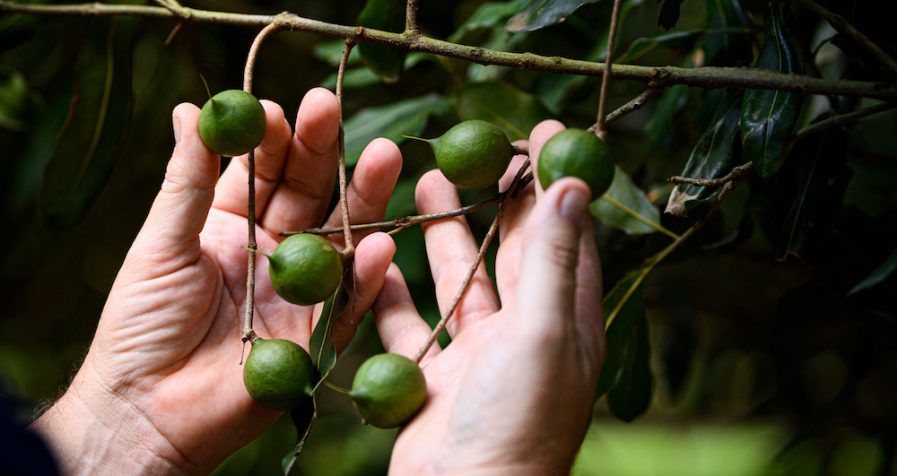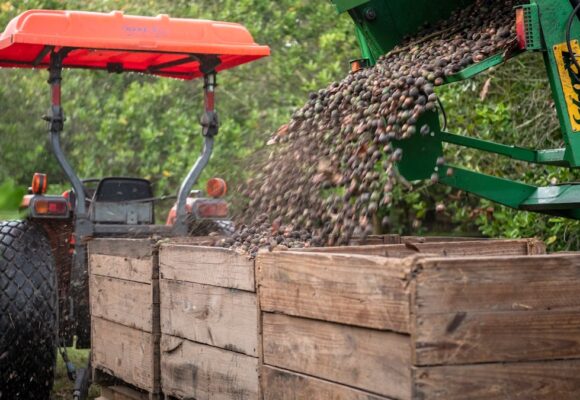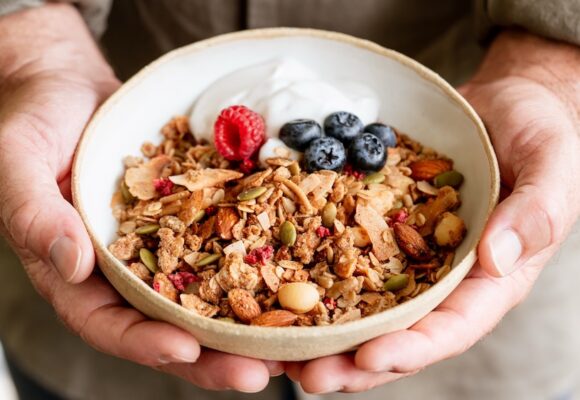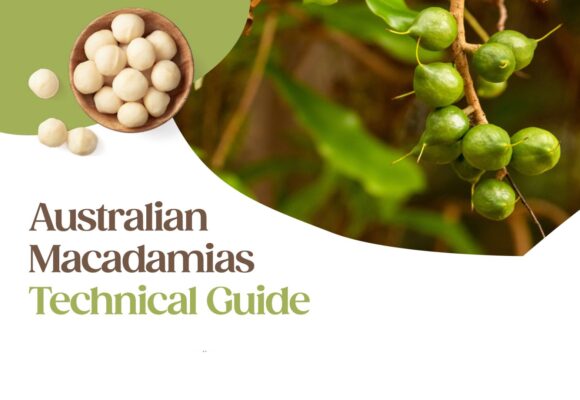In today’s rapidly changing world, the call for sustainability is louder than ever before, particularly in relation to food production. Gone is the era of meeting demand at any cost as businesses, governments and consumers across the globe grapple with the environmental impacts of their choices both large and small.

Sustainable production has long been a priority for Australia’s macadamia industry, with growers and processors alike consistently striving to produce the world’s best macadamias in the most ecologically sensitive manner possible.

There are many elements that fall under the sustainability umbrella in macadamia production, from water and carbon to biodiversity and biological controls. One of the areas that has attracted innovative thinking is on-farm waste management and in particular, how macadamia shells can be used to create everything from homewares to fuel and biochar.
Let’s take a closer look at what happens to the by-products of Australian macadamia production, how our growers ensure nothing goes to waste, and the technology that an Australian company has developed that could make macadamia shells part of the climate change mitigation solution .
Nothing going to landfill
Growers ensure every part of the macadamia tree and nut is either reused or recycled, with nothing going to landfill.
Organic matter such as branches or foliage is returned to the earth beneath the trees to be reabsorbed by the soil from which they originally grew, while the soft outer husks of the macadamia nuts are used as compost, enriching the soil with nutrients.

Macadamia shells: a biochar hero
Biochar is typically sold to agricultural operators and compost producers, and it’s a market that’s developing globally, with a forecast compound annual growth rate of 11.14% from 2023 to 20322. When applied to soil it increases plant vigour, soil water-holding capacity and nutrient retention. It can also be used in construction to create ‘green’ concrete and in mine-site rehabilitation via its ability to help with filtration of heavy metals.
Pyrocal has discovered that while many different types of waste biomass can be converted into biochar, including tree prunings, coconut shells, and green waste, it’s macadamia shells that are proving to be a standout.
“Macadamia shells are our hero feedstock,” says Pyrocal Communications and Carbon Markets Manager Emma Greenhatch. “They are naturally high in carbon at around 85%. They are also very solid and don’t break down. For every tonne of macadamia shell biochar produced, between 2.5 and 3 tonnes of carbon dioxide is removed from the atmosphere.”
Emma says it’s the durability of macadamia shell biochar that makes it such a powerful carbon sequestration tool.

“If macadamia shells were just left on the soil to break down naturally, they would create carbon emissions that are a natural result of the decomposition process, which would end up in the atmosphere. While those shells would eventually break down into the soil, they aren’t in a durable form. By contrast, when you put the shells through our conversion process, the result is biochar which holds that carbon in a highly durable form for hundreds of years, rather than having it released into the atmosphere,” she explains.
The biochar is also very porous, with an open cell structure that makes it excellent for retaining water as it effectively acts like a sponge. “This can be beneficial for water conservation during periods of drought,” Emma say. “This cell structure also holds nutrients really well which is great for the soil’s microbiome.”
Waste redefined
Pyrocal says the beauty of its system is that it takes waste – which by definition is unwanted and unusable – and converts it into something of value.
“Our technology can create more value than just composting or producing animal feed, which is where a lot of biomass has traditionally ended up if it’s not going to landfill,” she says. “By creating biochar from macadamia shells or other feedstocks, a business can derive three benefits. Firstly, the biochar that’s produced which can be used in their own operations if appropriate or on-sold to other agricultural operators. Secondly, the heat that our system produces as it’s creating biochar can be used to power other processes, effectively producing an energy saving. And finally, there’s the opportunity to claim carbon offset credits for selling the biochar that has been produced.”

Through its demonstration plant in Queensland, Pyrocal has undertaken thorough lifecycle analysis of all the emissions associated with producing macadamia shell biochar right through to the application of the biochar it produces.
“Our system creates minimal emissions as it processes the macadamia shells into biochar, so the net result is that it’s not just offsetting the carbon produced, it’s actually removing carbon dioxide from the atmosphere,” says Emma.
“It opens up the potential to completely reimagine the way feedstocks are treated and flipping the mindset around waste to view macadamia shells as a revenue producing mechanism, in the same way as you would look at the kernel as a source of revenue. It’s a win-win because you’re effectively minimising emissions, which is good for the planet, as well as deriving enterprise level benefits.”


